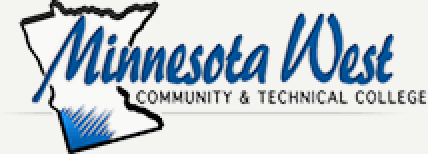MATH 1122 Calculus II
MATH 1122: Calculus II
Description
Calculus II calculates areas using definite integrals and continues to expand Calculus I concepts. Other topics include the calculus of transcendental functions, techniques of integration, applications of integration, differential equations and modeling, and infinite sequences and series, Taylor polynomials, and the Calculus of polar and parametric equations.
Credits
4
Prerequisite
MATH 1121
Corequisite
None
Topics to be Covered
1. Brief review of derivatives and antiderivatives
2. Areas and the Definite Integral
3. Evaluating integrals with the Fundamental Theorem of Calculus
4. Integration by Substitution and Integration by Parts
5. Integration Tables and Computer Algebra Systems
6. Applications of Definite Integrals: Areas, Volumes, Surface Areas, Lengths, Work, Fluid Force, Probability
7. Differential Equations
8. Separation of Variables
9. Growth and Decay Applications Logistic Applications
10. Sequences
11. Arithmetic and Geometric Series
12. Estimating Sums
13. Convergence of Series
14. Power Series
15. Binomial Series
16. Taylor Series and Polynomials and their Application
17. Using Series to Solve Differential Equations
18. Parametric Equations and Polar Coordinates and their Calculus
Learning Outcomes
1. Apply a variety of integration techniques, including u-substitution, integration by parts, trigonometric substitution, and partial fractions.
2. Use definite integrals to solve problems such as finding area, work, volume, arc length, fluid forces, and center of mass.
3. Determine convergence or divergence of an improper integral.
4. Approximate a definite integral using Simpson’s Rule and/or the Trapezoid Rule.
5. Apply the definition of convergence to calculate the limit of a sequence or the sum of a convergent series.
6. Apply tests of convergence to determine the behavior of an infinite series.
7. Find Taylor series representations of basic functions.
8. Find the slope of a line tangent to a parametric curve.
9. Graph functions in polar coordinates and find slopes of tangent lines.
Credit Details
Lecture: 4
Lab: 0
OJT: 0
MnTC Goal Area(s): Goal Area 04- Mathematics/Logical Reasoning
Minnesota Transfer Curriculum Goal Area(s) and Competencies
Goal Area 04: Mathematics/Logical Reasoning is already met by the pre-requisite course MATH 1121
Transfer Pathway Competencies
1. Apply a variety of integration techniques, including u-substitution, integration by parts, trigonometric substitution, and partial fractions.
2. Use definite integrals t solve problems such as finding area, work, volume, arc length, fluid forces, and center of mass.
3. Determine convergence or divergence of an improper integral.
4. Approximate a definite integral usins Simpson’s Rule and/or the Trapezoid Rule.
5. Apply the definition of convergence to calculate the limit of a sequence of the sum of a convergent series.
6. Apply tests of convergence to determine the behavior of an infinite series.
7. Find Taylor series representations of basic functions.
8. Find the slope of a line tangent to a parametric curve.
9. Graph functions in polar coordinates and find slopes of tangent lines.
